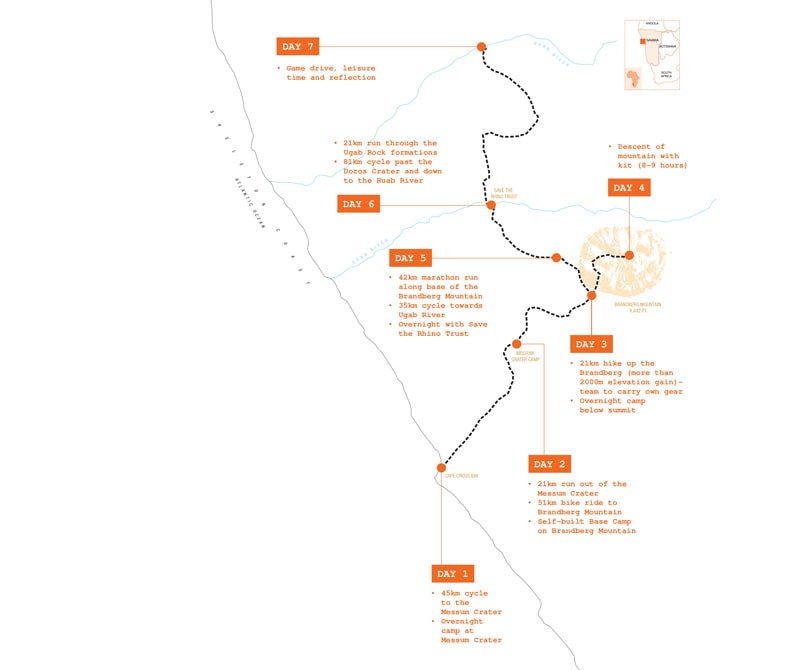INEOS gives its 3rd year graduates the opportunity to take on an African adventure of a lifetime – to test and expand their limits, build their fitness, and show them what they’re truly capable of when they say yes, prepare wisely, and dare to win.
Brutal and brilliant is how one of the group described the In Nam 19 challenge. And we have to agree with him. Using a combination of hiking, mountain biking and running, INEOS graduates traversed the Skeleton Coast, Damaraland and Kaokaveld Wilderness areas of Northern Namibia.
They passed over three ancient volcanic craters (calderas), climbed Namibia’s highest peak, conquered the unforgiving basalt lavas of the Ugab on foot, bridged two major ephemeral river systems in one 100km desert day and traversed the last frontier of the Big 3 – the Black Rhino, Desert Elephant and Dryland Lions of Africa.
Quotes
There are no words for the stunning beauty of the sun-baked landscapes of the deserts of Namibia. And there are no words to describe the determination, true grit and positive energy shown by all the graduates.
- Hans Casier, CEO INEOS Phenol
Anything is possible if you put your mind to it. Preparation is key. I learned to see past the struggle and focus on the sweetest bit of each day - a pint of beer in the knowledge that I had successfully completed that day’s challenge.
- Davidson Ching, Process engineer (Asia Pacific)
My teammates helped me realise that any extremely difficult task can be made easier, and maybe even fun, with the support of your team.
- Cara Lauber, Process controls engineer, Chocolate Bayou, America
I learned that even when times get tough – and they did in Namibia – the only feelings that remain are proudness, gratitude and joy about the accomplishments.
- Benedikt Kannenberg, Safety engineer, INEOS O&P Europe North
Teamwork is the most important thing. Alone you may go faster but as a group, you can go further.
- Nicolas Monino, Optimisation & planning engineer, PetroINEOS, Lavera, France

























